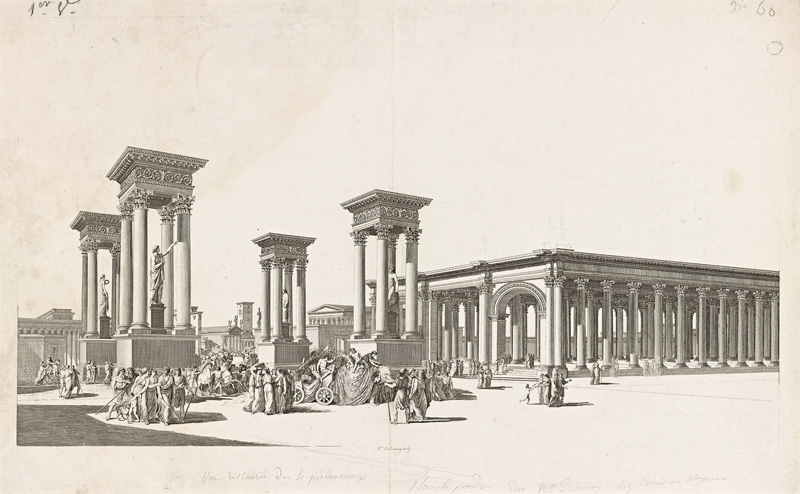Monumental Arch and Tetrapylon
The Monumental Arch and Tetrapylon, two enormous gateways along the Colonnade Street, were each destroyed by ISIS—the arch in 2015 during the first occupation of the site and the Tetrapylon in early 2017 during the second occupation. Imposing even in its ruined, pre-2015 state, Palmyra's Monumental Arch articulated a turn on the east side of the Colonnade Street where it switched direction to join the sanctuary of Bel. Trapezoidal in plan, the monumental arch seamlessly unified the street and, possibly, was erected like a Roman triumphal arch to mark Septimius Severus's victory over the Parthians in 197 CE. Besides sketching a cross section of the arch, Cassas drafted a detailed reconstruction topping the structure with a pediment.
Farther west in the street stood the Tetrapylon, marking the heart of the city. Only its four great bases were standing when Cassas and Vignes visited Palmyra, in contrast to the well-preserved state of the monumental arch. Since it would have been difficult to capture the former grandeur of the Tetrapylon given its ruinous state, no photographs were taken; however, besides including the remains of the Tetrapylon in a panoramic view of the Colonnade Street from the west, Cassas envisioned a reconstruction with each base topped by a heavy cornice supported by four corner columns that framed a life-size statue in the center. As Cassas's reconstruction indicates, the Tetrapylon's location just north of the agora, or marketplace, and adjacent to the theater would have made it a vital public space. In the 20th century, the Tetrapylon's massive columns, which lay broken on the ground, were re-erected on their bases.










